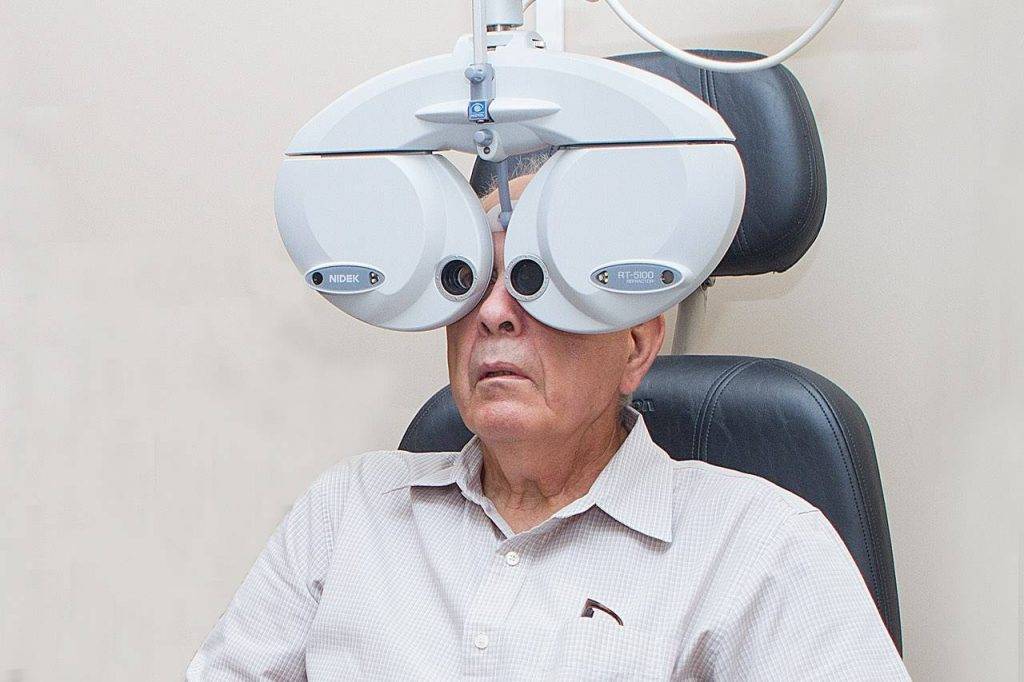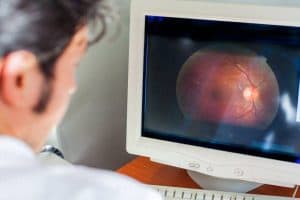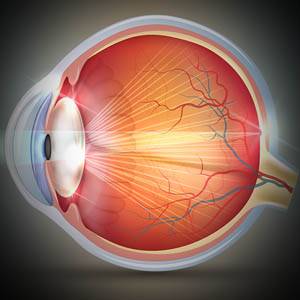Macular degeneration impacts the lives of nearly 10% of all adults—more than all other eye conditions combined.
Let’s clear up some myths and facts on a serious sight-threatening eye condition, macular degeneration.
Macular degeneration, also known as AMD, is a chronic eye condition most common in people over 60. People with macular degeneration may lose their central vision, but retain their peripheral, or side vision.
There’s a lot of information about AMD out there, but how much of it is true? Considering it’s a leading cause of blindness and vision loss, it’s pretty important to get the facts straight.
If you think you may have macular degeneration visit your eye doctor for an eye exam.
MYTH 1: Macular degeneration is rare
FACT
AMD is actually the leading cause of vision loss in adults over 50, sufferers can even be as young as 20.
As many as 9.4% of all adults suffer with AMD, and other macular diseases, impacting the lives of over 11 million people in the United States. This number is expected to double to nearly 22 million by 2050.
There are two types of AMD dry and wet.
Dry AMD is where the cells of the macula, the center of the retina, die, causing blurry central vision. Dry AMD is about 85 to 90% of all cases.
Wet AMD is where fluid from blood vessels leak into the macula and cause blind spots. Wet AMD is around 10 to 15% of cases. It is considered the more advanced form since it can cause severe damage to vision.
MYTH 2: You can tell if you have AMD
FACT
In its earliest stages macular degeneration may be barely noticeable.
Most people won’t have vision loss, which is why regular exams with an eye doctor are important. Sometimes only one eye’s vision is affected while the other eye continues to see normally.
The most common early symptom of the dry form of AMD is blurred vision. Later symptoms include difficulty reading or recognizing faces.
Typical early symptoms of wet AMD, include straight lines appearing crooked or wavy, along with loss of central vision making details, such as features on a face, appear blurry or have blind spots while the outside perimeter is seen clearly.
MYTH 3: There is no way to stop AMD from worsening
FACT
While you can’t entirely prevent macular degeneration, the progression of the disease can be reduced with a healthy lifestyle and medical treatment. All of the following can help reduce the progression of AMD.
- Eat a diet filled with leafy, green vegetables and fish
- Maintain a normal weight
- Avoid smoking
- Protect your eyes from ultraviolet light with sunglasses
- Keep blood pressure and cholesterol levels in check
- Exercise regularly
Contact an eye doctor near you that can conduct eye exams that can help detect macular degeneration and discuss treatment options for you.
SEE RELATED: Protecting Yourself From Macular Degeneration
MYTH 4: There is no treatment for AMD
FACT
There are a variety of ways to treat macular degeneration.
To treat Dry AMD a variety of therapies can be used, including:
- Low vision rehabilitation to help adjust to vision deficits
- Antioxidant supplements to halt the progression of symptoms
- Surgical implant of a telescopic lens to magnify field of vision
For wet AMD treatment includes:
- Medications and injections to halt the progression of the disease, preserve existing vision and, if used early enough, possibly restore some lost vision
- Photodynamic and laser therapy using medication and lasers or light to seal the blood vessels in the macula and prevent them from leaking
- Low vision rehabilitation can also be helpful in adjusting vision deficits like blind spots
MYTH 5: Nothing can be done to prevent AMD
FACT
Although the cause of AMD is unknown, there are some known risk factors that can be addressed, including:
- Smoking
- Obesity
- Exposure to ultraviolet light
- High blood pressure
- High cholesterol
Some risk factors that cannot be changed include
- Family history of AMD
- Age
- Gender (women are at greater risk)
- Light skin tone
- Light-colored eyes
To assure prompt treatment of AMD, it’s important to go for regular eye exams.
Eating a healthy diet, maintaining weight, avoiding smoking, and paying attention to blood pressure and cholesterol levels are all steps that can be taken to keep eyes healthy and help prevent macular degeneration and other sight-threatening macular diseases.
LEARN MORE: Guide to Eye Conditions
If you suspect you may have macular degeneration, contact an eye doctor near you to schedule an appointment, they will provide you with information about AMD and the best course of treatment to prolong healthy clear vision as long as possible.









